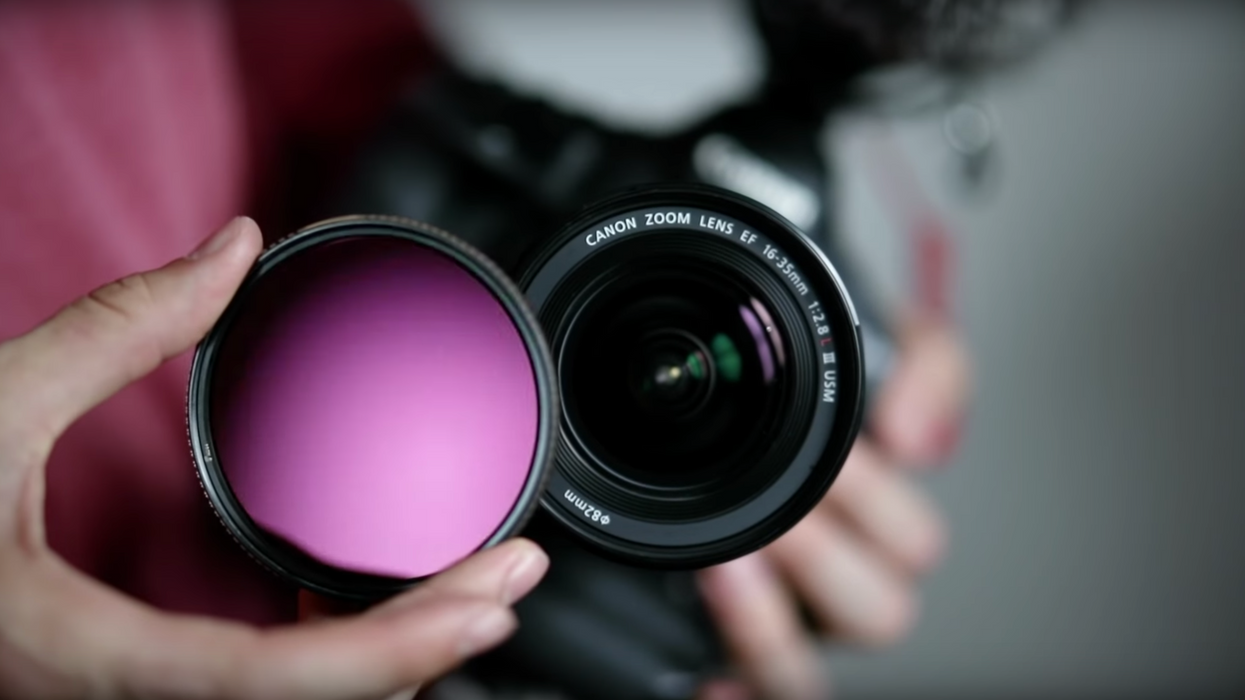Watch: Using Filters to Make Your Work Look More Professional
Filters—one of the most essential tools in a filmmaker's gear bag.

The most common problems you'll see in the work of new filmmakers have something to do with exposure, whether it's underexposing foregrounds or overexposing skies. And it makes sense—shooting situations that have vastly different light intensities can be really tricky for beginners because, hello, which part of the frame do you expose for? Typically, newbies will expose for their subject and sacrifice details in the sky or windows, allowing them to blow out and be big white blobs in the frame, which is not visually appetizing.
That's why all beginners need a good ol' fashioned primer on different types of filters that explains what they are, what they do, and how they can be used to make your footage look a thousand times better. In this video, Peter McKinnon gives it to 'em. Check it out below:
While using filters isn't super complicated, it's certainly not as simple as grabbing any old one and popping it onto your lens and calling it good. These things come in a wide variety of different sizes, strengths, and types, many of which (perhaps the most important of which) McKinnon covers in his video.
- ND Filter: ND (neutral density) filters, which are probably one, if not the, most essential of all filters, reduce the amount of light that is able to enter through your lens. They allow you to shoot in bright environments (outdoors) with a wide open aperture, which means you can still get shallow depth-of-field.
- Polarizing Filter: If you want to darken skies or see through windows, you're gonna need a polarizing filter. They increase color saturation while decreasing reflections and glare. Be aware, though, that you'll need a lot more light in order to properly expose when using them.
- Black Pro-Mist: These filters are great for subtly toning down sharpness and contrast to give you a more balanced, atmospheric image.
- UV Filter: These things are supposed to protect your images from being compromised by ultraviolet radiation, but since most people can't really tell the difference in image quality, they're better utilized as front element protectors.
- Step-up/down ring: Your lenses most likely have multiple diameters, and unless you want to buy filters for each friggin' size, you'll want to get yourself some step-up and step-down rings.
Hopefully, now you have a better understanding of how these filters can make your set-life easier because, for many filmmakers, these are the tools that are almost as important as the camera and lens itself.
If you want to learn more about filters, click here to indulge.
Source: Peter McKinnon







![Ethos, Pathos, Logos: 20 Effective Ways to Advertise [Infographic]](https://nofilmschool.com/media-library/ethos-pathos-logos-20-effective-ways-to-advertise-infographic.jpg?id=34064614&width=600&height=600&quality=90&coordinates=560%2C0%2C0%2C0)



